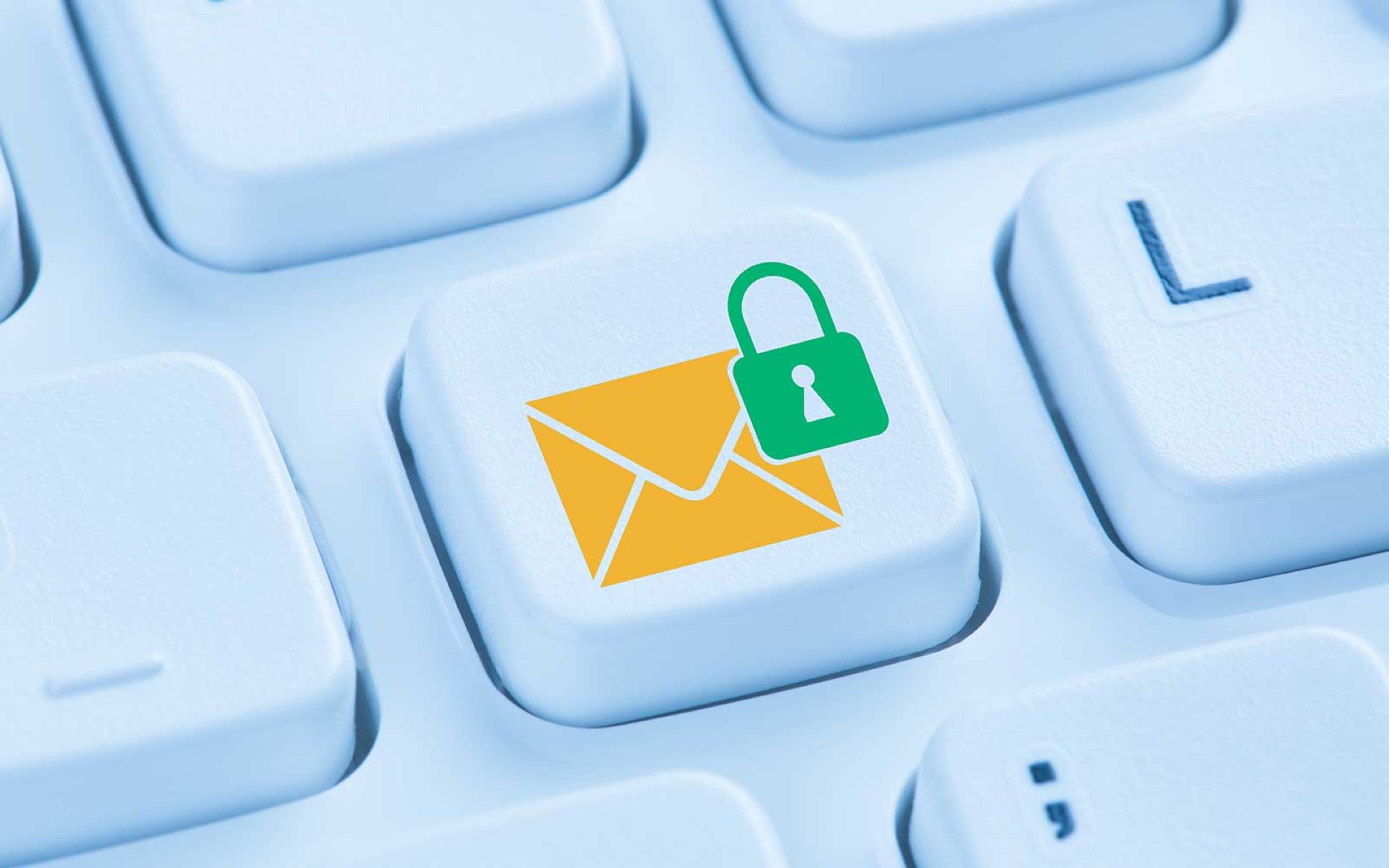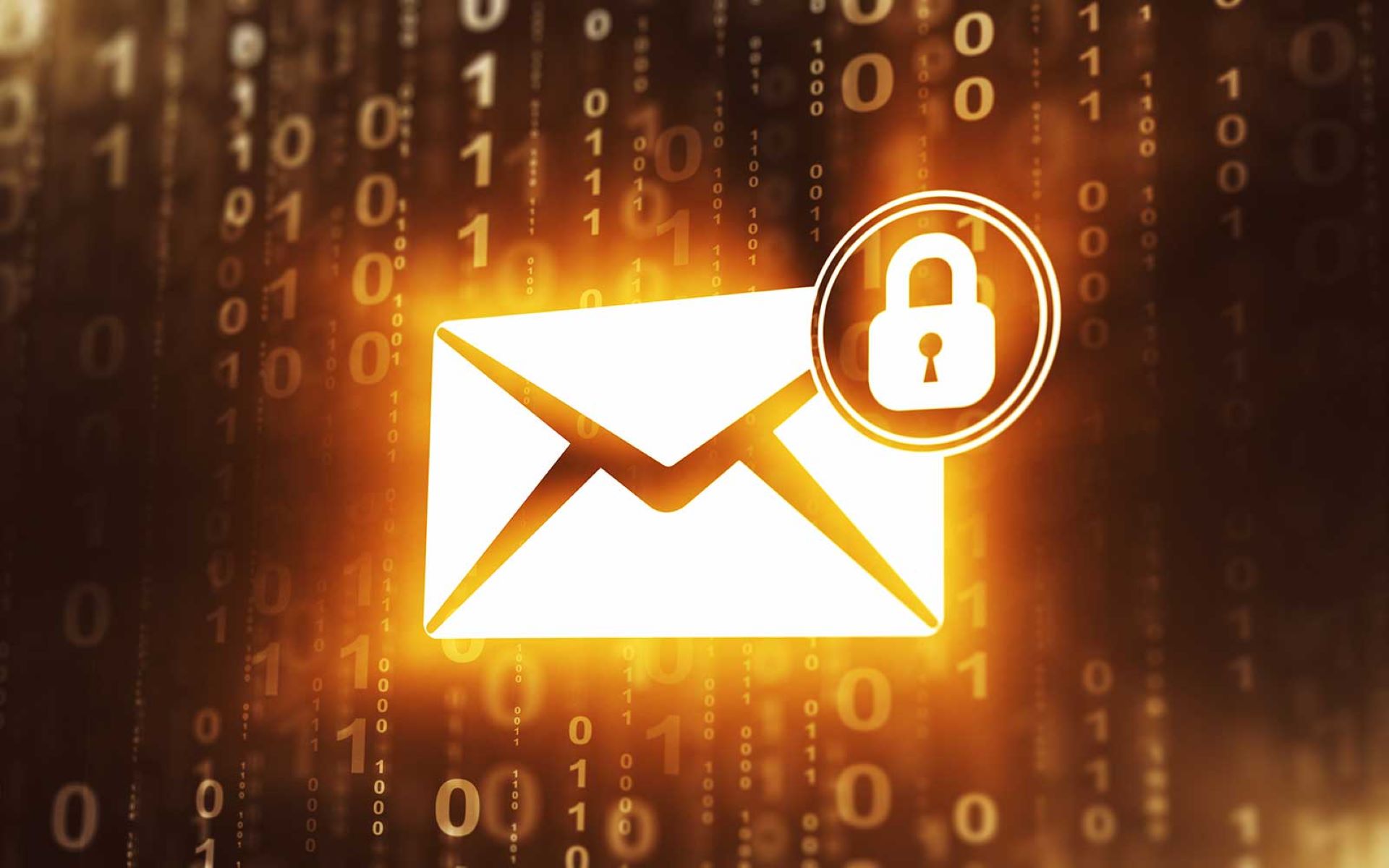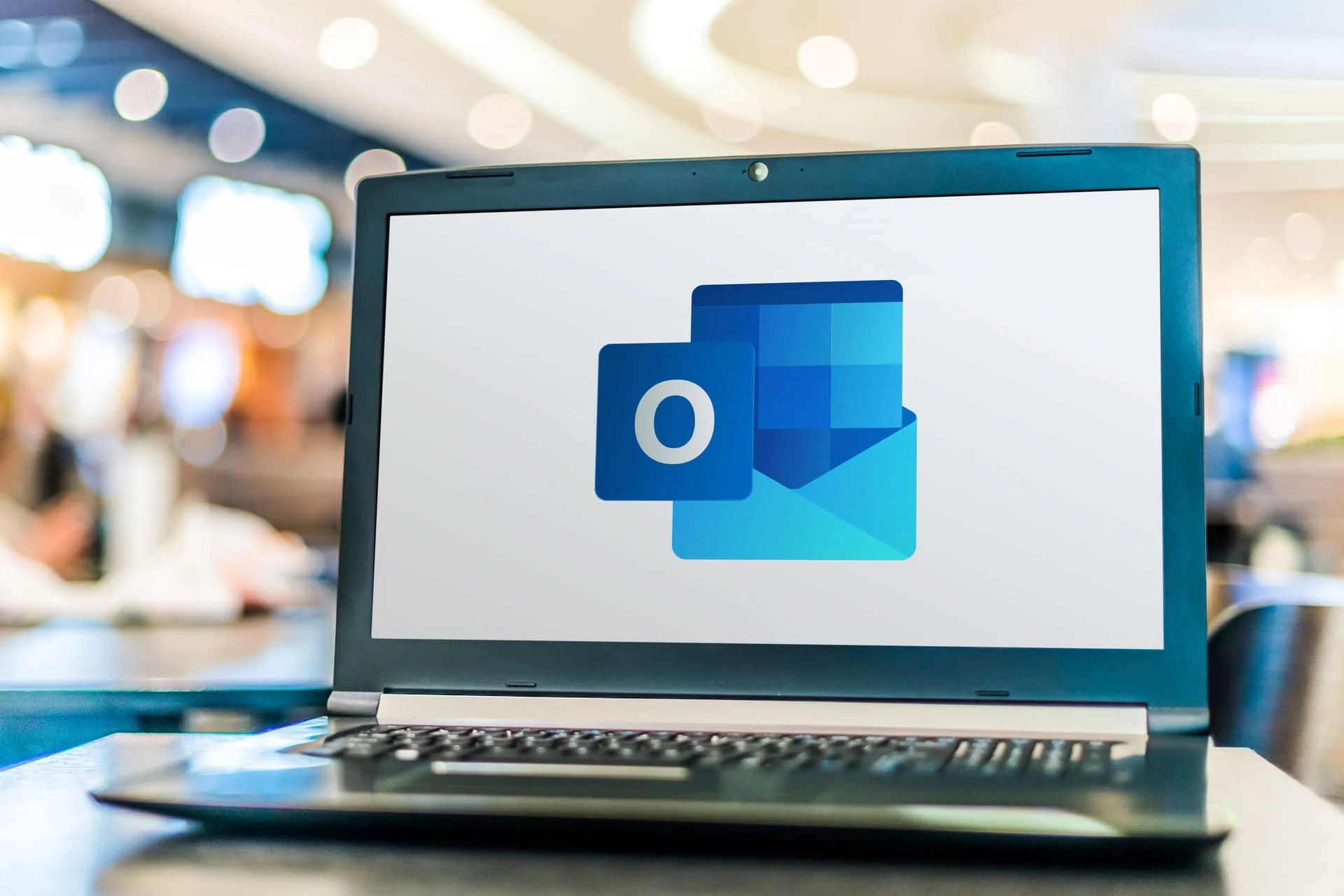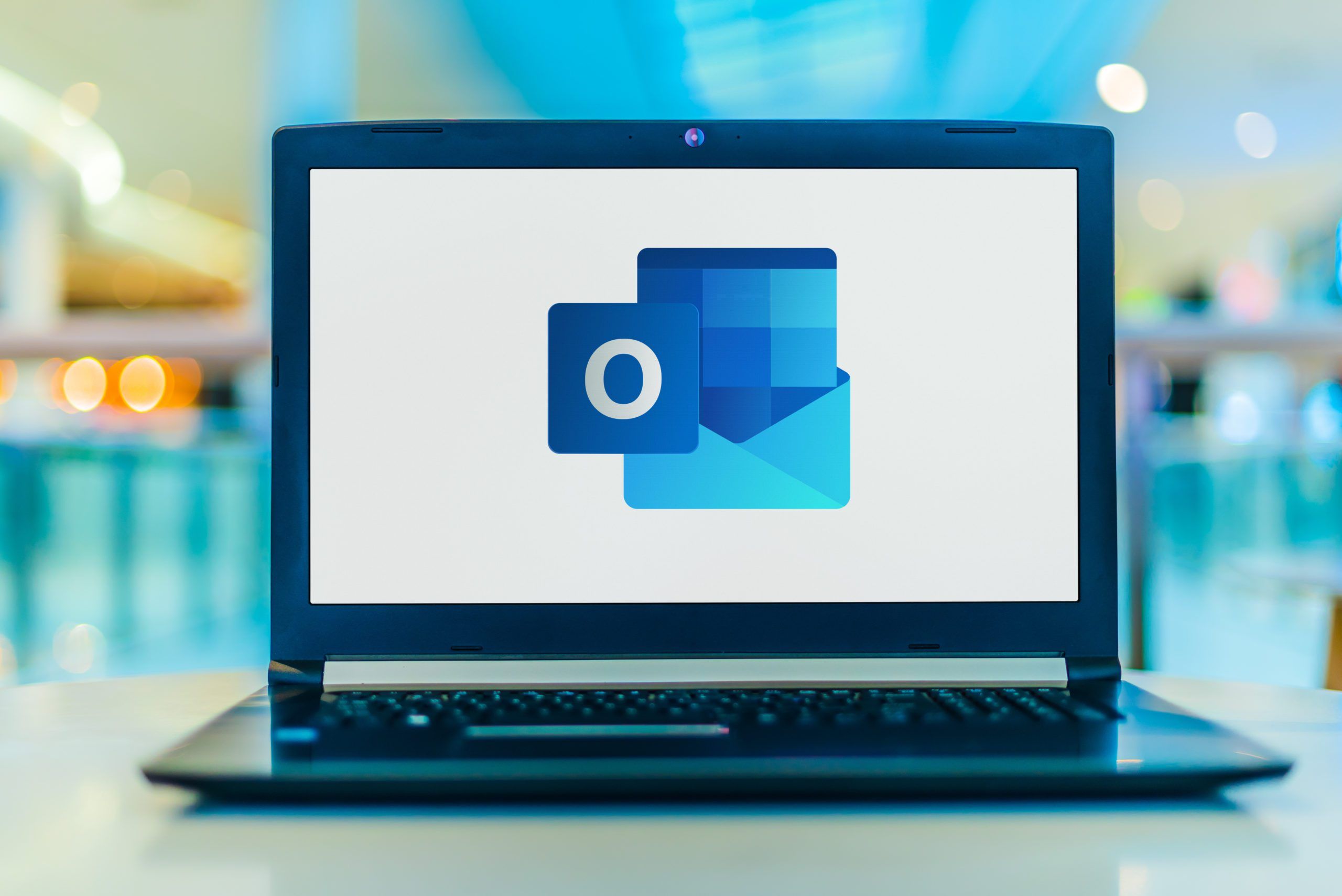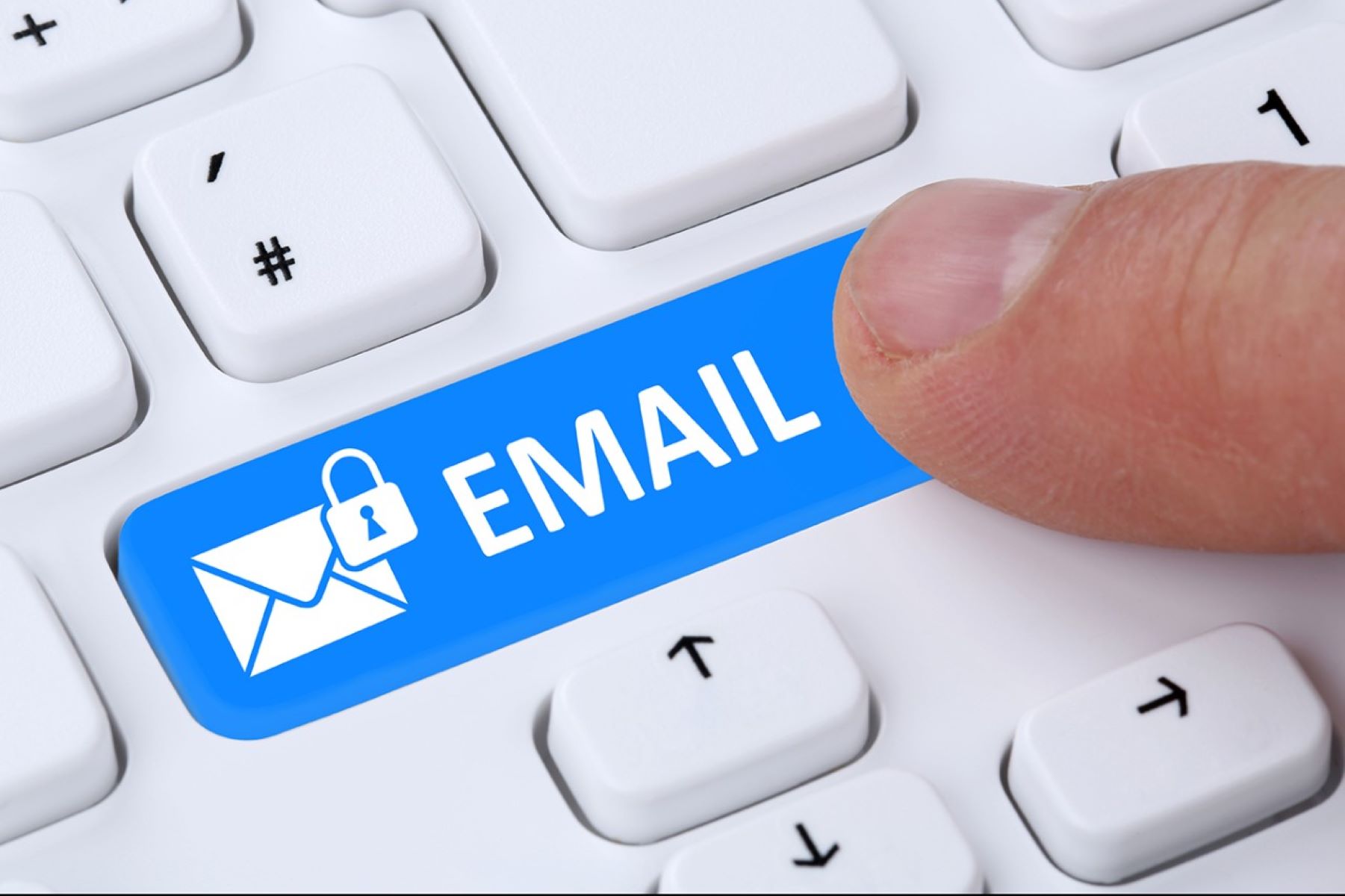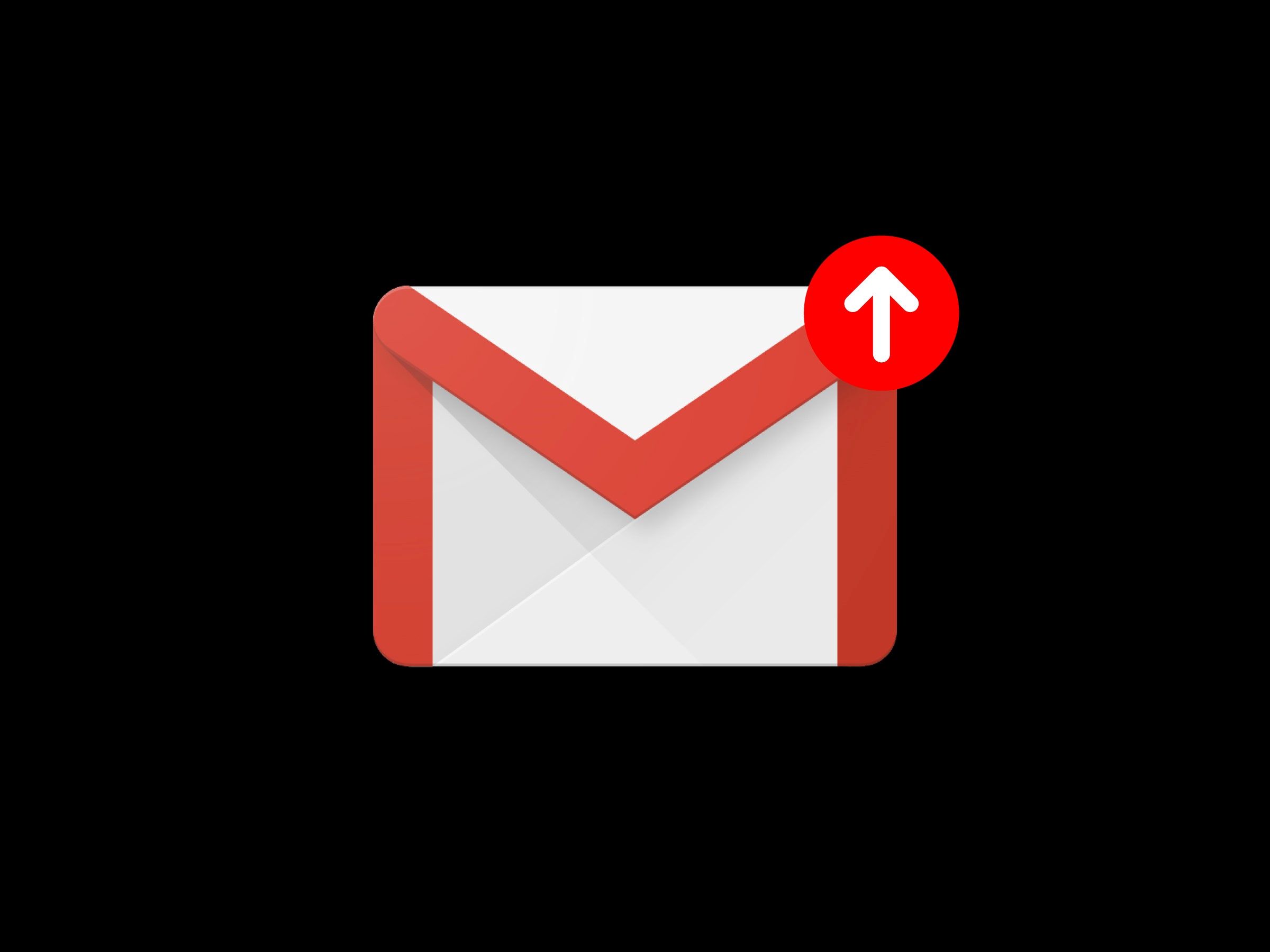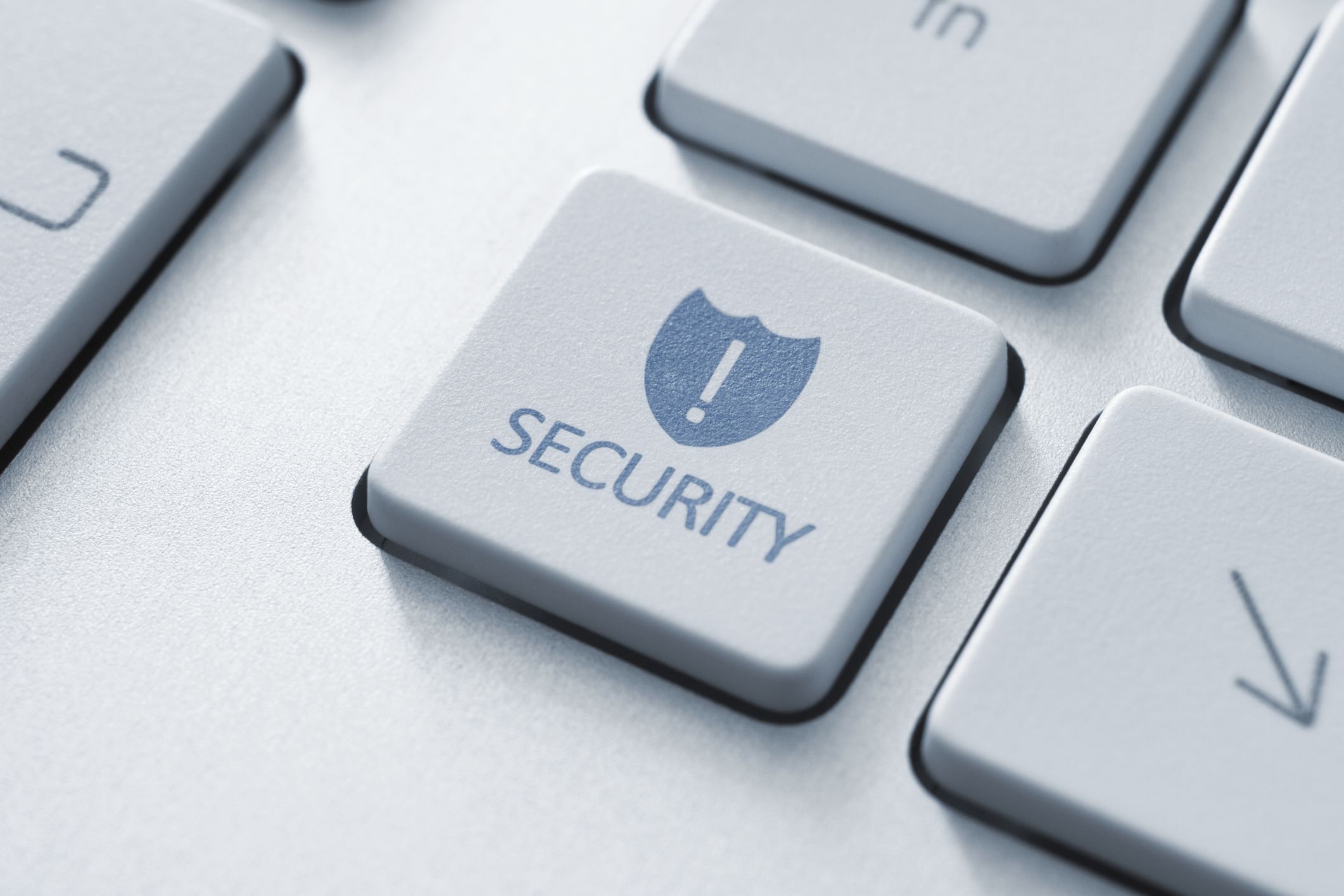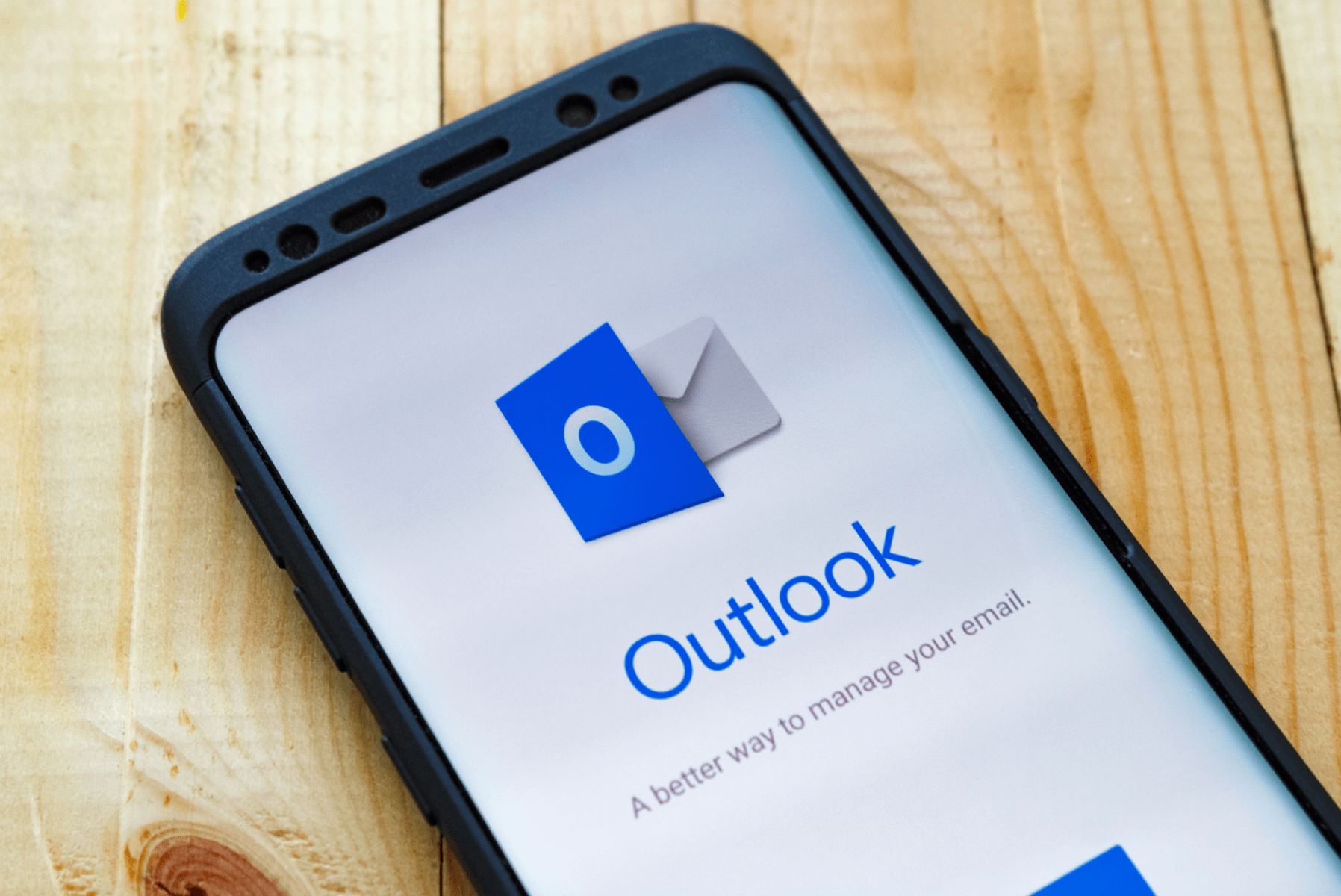Introduction
Email has become an essential means of communication for individuals and businesses alike. However, with the increasing threat of cyber attacks and privacy breaches, securing email communications has become paramount. This is where email encryption comes into play.
Email encryption is the process of encoding an email message to protect its contents from unauthorized access. It ensures that only the intended recipient can read and understand the message, providing an additional layer of privacy and security.
So, how does email encryption work? Essentially, it scrambles the message’s content using cryptographic algorithms, making it unreadable to anyone who doesn’t have the decryption key. This ensures that even if the email gets intercepted during transmission or stored on a server, the data remains secure.
The benefits of using encrypted email are numerous. Firstly, it safeguards sensitive and confidential information from prying eyes. Whether it’s personal conversations, financial data, or business-related information, encrypting emails ensures that only the intended recipient can access the content.
Secondly, encrypted email helps protect against identity theft and phishing attacks. By encrypting the messages, it becomes much more challenging for attackers to intercept and manipulate the email content, reducing the risk of falling victim to fraudulent activities.
Furthermore, encrypted email can help organizations and individuals stay compliant with industry regulations and privacy standards. Depending on the nature of the data being exchanged, there may be legal requirements to ensure its confidentiality and integrity. Encrypting emails helps meet these compliance obligations.
There are various types of email encryption available, each with its own unique characteristics and implementation methods. Some of the most common types include end-to-end encryption, PGP encryption, and S/MIME encryption. Each type offers varying levels of security and ease of use, allowing users to choose the most suitable option based on their needs.
While email encryption can be implemented by using encryption software, some email service providers offer built-in encryption features. These secure email service providers often provide a seamless and user-friendly experience, making it easier for individuals and businesses to encrypt their email communications.
In the following sections, we will delve deeper into the different types of email encryption, how to send and receive encrypted emails, and important considerations to keep in mind when using encrypted email. By the end of this article, you will have a comprehensive understanding of email encryption and be well-equipped to protect your email communications.
What is Email Encryption?
Email encryption is a security measure that protects the confidentiality and integrity of email communications. It involves the use of cryptographic algorithms to encode the content of an email, making it unreadable to anyone except the intended recipient.
When an email is encrypted, it is transformed into a ciphertext, which is essentially a jumbled mess of characters. The only way to decipher the encrypted message and understand its content is by using a decryption key, which is possessed exclusively by the recipient.
The primary purpose of email encryption is to prevent unauthorized access to sensitive information. With the increasing prevalence of cyber threats, such as hacking, data breaches, and interception of communications, encrypting emails has become essential.
By encrypting email messages, the content remains protected even if it is intercepted during transmission or stored on email servers. This added layer of security not only ensures the privacy of personal conversations but also safeguards sensitive data such as financial information, trade secrets, and confidential business communications.
Email encryption also plays a crucial role in combating identity theft and phishing attacks. Without encryption, malicious individuals can intercept emails, manipulate their content, or pose as legitimate senders to trick recipients into revealing sensitive information. Encryption helps prevent such fraudulent activities by making it extremely difficult for attackers to crack the encryption and tamper with the email’s content.
There are different methods and technologies used for email encryption, each with its own strengths and implementation requirements. End-to-end encryption, for example, encrypts the email message on the sender’s device and keeps it encrypted until it reaches the recipient’s device. This type of encryption ensures that no intermediaries can access the content of the email.
PGP (Pretty Good Privacy) encryption and S/MIME (Secure/Multipurpose Internet Mail Extensions) encryption are other common methods used for email encryption. PGP encryption uses a combination of symmetric and asymmetric encryption algorithms, while S/MIME encryption relies on digital certificates to encrypt and authenticate email messages.
It’s important to note that email encryption does not eliminate all security risks associated with email communication. Encrypted emails can still be vulnerable to attacks such as malware or social engineering. However, encryption significantly reduces the risk of unauthorized access to email content and provides an essential layer of protection for sensitive information.
In the next section, we will explore how email encryption works and the different types of encryption techniques used in securing email communications.
How Does Email Encryption Work?
Email encryption works by encoding the content of an email in a way that can only be deciphered by the intended recipient with the use of a decryption key. It involves employing cryptographic algorithms to transform the plaintext message into ciphertext, making it unreadable to anyone who doesn’t possess the appropriate key.
Here’s a general overview of how email encryption works:
- Encryption Key Generation: When a user initiates an encrypted email, a unique encryption key pair is generated. This key pair consists of a public key and a private key.
- Public Key Sharing: The sender’s public key is shared with the recipient. This can be done by uploading the public key to a key server, sending it via a secure channel outside of email, or using a key management system.
- Message Encryption: The sender’s email client uses the recipient’s public key to encrypt the email message. The email content is transformed into ciphertext, which can only be decrypted with the recipient’s private key.
- Message Transmission: The encrypted email is sent over the standard email infrastructure, just like any other email. However, the content is now protected by encryption and is virtually impossible to decipher without the private key.
- Message Decryption: Upon receipt of the encrypted email, the recipient’s email client uses their private key to decrypt the ciphertext and reveal the original plaintext message.
It’s important to note that end-to-end encryption, which ensures that only the sender and recipient can access the content, requires both parties to have compatible encryption systems in place. This means that both the sender and recipient need to be using email clients or services that support end-to-end encryption.
There are different types of email encryption technologies used to encrypt the email message. PGP (Pretty Good Privacy) encryption is a widely used method that combines symmetric and asymmetric encryption. It uses the recipient’s public key to encrypt the session key, which is then used to encrypt the actual content of the email.
S/MIME (Secure/Multipurpose Internet Mail Extensions) encryption is another commonly used method. It relies on digital certificates issued by trusted authorities to encrypt and authenticate email messages.
Overall, email encryption provides an essential layer of security for sensitive and confidential information. By encrypting emails, individuals and organizations can ensure that their communication remains private and protected from unauthorized access.
In the next section, we will explore the benefits of using encrypted email and how it can enhance privacy and security for both personal and business use.
Benefits of Encrypted Email
Encrypted email offers numerous benefits that enhance privacy, security, and compliance for both personal and business use. Let’s explore some of the key advantages:
- Data Protection: One of the primary benefits of using encrypted email is the protection of sensitive and confidential information. By encrypting the content of an email, it becomes virtually unreadable to anyone except the intended recipient. This ensures that personal conversations, financial data, and other sensitive information are safeguarded from unauthorized access.
- Privacy Enhancement: Encrypted email adds an extra layer of privacy to your communication. It ensures that the content of your emails remains confidential and can only be accessed by the intended recipient. This is especially important for individuals and businesses that handle sensitive information, such as healthcare records, legal documents, and financial statements.
- Prevention of Data Breaches: Encrypting email messages can help prevent data breaches. Even if an email is intercepted or accessed without authorization, the encrypted content remains unreadable without the decryption key. This mitigates the risk of data leaks and unauthorized access to confidential information.
- Protection Against Phishing: Encrypted email can help protect against phishing attacks. Phishing emails often mimic legitimate senders to trick recipients into revealing sensitive information or downloading malicious attachments. With email encryption, it becomes extremely difficult for attackers to tamper with the content of the email, reducing the risk of falling victim to such fraudulent activities.
- Compliance with Regulations: Many industries have strict regulations regarding the privacy and security of data. Encrypted email can help organizations stay compliant with these regulations, such as HIPAA in the healthcare industry or GDPR in Europe. By encrypting emails containing sensitive or personally identifiable information, organizations demonstrate their commitment to protecting customer data and maintaining compliance.
- Secure Communication: Encrypted email provides a secure communication channel for exchanging sensitive information. Whether it’s a confidential conversation between individuals or the sharing of business secrets, encryption ensures that only the intended recipient can access the content, creating a trusted and secure channel of communication.
Overall, encrypted email offers significant advantages in terms of data protection, privacy enhancement, prevention of data breaches, protection against phishing, compliance with regulations, and secure communication. By utilizing email encryption, individuals and businesses can have peace of mind knowing that their communication is private, secure, and in compliance with industry standards and regulations.
In the next section, we will explore the different types of email encryption technologies and how they offer unique features and functionalities.
Different Types of Email Encryption
Email encryption can be achieved through various methods and technologies, each offering unique features and functionalities. Let’s explore some of the different types of email encryption:
- End-to-End Encryption: End-to-End encryption is considered to be the most secure form of email encryption. It ensures that only the sender and intended recipient can access the content of the email. With end-to-end encryption, the email is encrypted on the sender’s device and remains encrypted until it reaches the recipient’s device. This type of encryption prevents intermediaries, including email service providers or hackers, from accessing the content.
- PGP Encryption: PGP, which stands for Pretty Good Privacy, is a widely used email encryption method. It combines symmetric and asymmetric encryption algorithms to secure the email content. PGP encryption utilizes the recipient’s public key to encrypt a session key, which is then used to encrypt the actual content of the email. The recipient’s private key is required to decrypt the email and access the original message.
- S/MIME Encryption: S/MIME, which stands for Secure/Multipurpose Internet Mail Extensions, is another commonly used method for email encryption. It relies on digital certificates issued by trusted authorities to encrypt and authenticate email messages. S/MIME encryption ensures the integrity and privacy of email communication by verifying the sender’s identity and encrypting the email content.
- Transport Layer Security (TLS): Transport Layer Security, also known as TLS, is a protocol that provides secure transmission of email messages between email servers. TLS encryption ensures that the communication between email servers is encrypted, securing the transfer of email messages in transit. While TLS does not encrypt the email content itself, it adds a layer of security to the overall email communication process.
- Secure Email Service Providers: Some email service providers offer built-in encryption features, allowing users to send and receive encrypted emails seamlessly. These secure email service providers utilize various encryption technologies to ensure the privacy and security of email communication. Using these providers eliminates the need for users to set up encryption independently.
Each type of email encryption offers its own benefits and tradeoffs in terms of security, ease of use, and compatibility. It’s important to choose the encryption method that aligns with your specific needs and requirements.
In the next section, we will explore end-to-end encryption in more detail and how it ensures the highest level of security for email communication.
End-to-End Encryption
End-to-end encryption is a robust method of email encryption that provides the highest level of security for confidential communication. It ensures that only the sender and the intended recipient can access and read the content of the email, while keeping it encrypted and inaccessible to intermediaries or unauthorized parties.
The concept of end-to-end encryption is based on the principle of encrypting the email message on the sender’s device and keeping it encrypted until it reaches the recipient’s device. This means that the email is secured throughout the entire transmission process, making it extremely difficult for anyone else to intercept, read, or tamper with the content.
End-to-end encryption works using a combination of symmetric and asymmetric encryption algorithms. When sending an encrypted email, the sender’s device generates a unique session key that is used to encrypt the content of the email. This session key is then encrypted using the recipient’s public key, ensuring that only the recipient can decrypt the session key with their private key.
Once the recipient receives the encrypted email, their device or email client uses their private key to decrypt the session key. With the decrypted session key, the email client can then decrypt the email’s content and allow the recipient to read the original message in its plaintext form.
End-to-end encryption provides several key benefits:
- Enhanced Privacy: End-to-end encryption ensures that only the sender and recipient can access the content of the email, eliminating the possibility of unauthorized access or surveillance. This enhances privacy and confidentiality for sensitive or confidential communications.
- Data Integrity: With end-to-end encryption, the email’s content remains intact and secure throughout the transmission process. It protects against tampering and ensures that the recipient receives the email exactly as intended by the sender.
- No Dependence on Third Parties: End-to-end encryption removes the need to rely on third parties, such as email service providers, to secure the email. The encryption and decryption processes occur exclusively on the sender’s and recipient’s devices, reducing the risk of potential vulnerabilities associated with third-party handling of sensitive data.
- Protection against Interception and Hacking: By encrypting the email’s content from the moment it leaves the sender’s device until it reaches the recipient’s device, end-to-end encryption provides a strong defense against interception by eavesdroppers or hackers attempting to access or manipulate the email’s content.
It’s important to note that for end-to-end encryption to work, both the sender and recipient need to use email clients or services that support end-to-end encryption. Additionally, the encryption keys used by both parties must be securely managed and protected to prevent unauthorized access.
In summary, end-to-end encryption is a powerful method of email encryption that ensures maximum security and privacy for confidential communication. By utilizing end-to-end encryption, individuals and organizations can have confidence that their email content remains secure and inaccessible to unauthorized parties.
PGP Encryption
PGP encryption, which stands for Pretty Good Privacy, is a widely used method of email encryption that combines symmetric and asymmetric encryption algorithms. It provides a secure way to protect the confidentiality and integrity of email communications by encrypting the content of the email and ensuring only the intended recipient can access the decrypted message.
PGP encryption works as follows:
- Key Generation: When setting up PGP encryption, the user generates a key pair consisting of a public key and a private key. The public key is shared with others, while the private key is kept securely and only known to the owner.
- Encryption Process: When the sender wants to send an encrypted email, their email client uses the recipient’s public key to encrypt a random session key. This session key is then used to encrypt the actual content of the email.
- Decryption Process: When the recipient receives the encrypted email, their email client uses their private key to decrypt the session key. With the session key, the recipient’s email client can decrypt the email’s content and allow the recipient to read the original message.
PGP encryption offers a number of advantages:
- Strong Security: PGP encryption utilizes both symmetric and asymmetric encryption algorithms, providing robust security for email communication. The use of asymmetric encryption ensures that the content can only be decrypted with the intended recipient’s private key, while symmetric encryption provides efficient encryption and decryption of the actual email content.
- Data Integrity and Authentication: PGP encryption also includes mechanisms for ensuring data integrity and authentication. The email content is digitally signed using the sender’s private key, allowing the recipient to verify the authenticity of the sender and ensure that the email has not been tampered with during transmission.
- Flexibility and Compatibility: PGP encryption is compatible with various email clients and platforms, making it accessible to a wide range of users. It is supported by numerous software applications and can be seamlessly integrated into existing email workflows.
It’s worth noting that PGP encryption requires careful management of encryption keys. The private key must be kept secure and protected, while the public key is used for encrypting emails and can be shared with others.
Despite its strong security features, PGP encryption can be more complex to set up and use compared to other email encryption methods. However, with the availability of user-friendly PGP encryption software and integrations, the process has become more accessible for users without advanced technical knowledge.
Overall, PGP encryption offers a high level of security and data protection for email communication. By implementing PGP encryption, individuals and organizations can ensure the confidentiality and integrity of their email content, guarding against unauthorized access and tampering.
S/MIME Encryption
S/MIME, which stands for Secure/Multipurpose Internet Mail Extensions, is a widely adopted method of email encryption that provides a secure way to protect the confidentiality, integrity, and authenticity of email communications. It relies on digital certificates issued by trusted authorities to encrypt and authenticate email messages.
S/MIME encryption works as follows:
- Key Generation: When setting up S/MIME encryption, the user generates a key pair consisting of a private key and a corresponding public key. The private key is securely stored, while the public key is added to a digital certificate.
- Digital Certificates: The digital certificate contains the user’s public key, along with other information such as the user’s name and email address. The certificate is issued by a trusted certificate authority, establishing the user’s identity and associating the public key with that identity.
- Encryption and Digital Signature: When a sender wants to encrypt an email, their email client uses the recipient’s public key, obtained through their recipient’s digital certificate, to encrypt the email content. This ensures that only the recipient, with their corresponding private key, can decrypt and read the email. Additionally, S/MIME enables the sender to digitally sign the email using their private key, providing authentication and ensuring that the email has not been tampered with during transmission.
- Decryption and Verification: When the recipient receives an encrypted email, their email client uses their private key to decrypt the email content. The recipient’s email client can also verify the digital signature using the sender’s public key, ensuring the authenticity and integrity of the email.
S/MIME encryption offers several benefits:
- Strong Security: S/MIME encryption provides strong security measures for email communication. The use of public key cryptography ensures that the email content remains encrypted and only accessible to the intended recipient.
- Message Integrity: S/MIME uses digital signatures to ensure message integrity, verifying that the email has not been tampered with during transmission. This provides assurance that the email content has not been modified by unauthorized parties.
- Authentication: With S/MIME encryption, the digital certificate associated with the sender’s public key provides authentication. The recipient can verify the sender’s identity, establishing trust and reducing the risk of phishing or impersonation attacks.
- Compatibility: S/MIME encryption is widely supported by email clients and platforms, making it accessible and compatible across different systems. This allows for seamless integration of S/MIME encryption into existing email workflows.
It’s important to note that S/MIME encryption requires the exchange of digital certificates between the sender and recipient. Additionally, valid and trusted certificates from recognized certificate authorities are necessary for proper encryption and authentication.
In summary, S/MIME encryption provides robust security, data integrity, and authentication for email communication. By utilizing S/MIME encryption, individuals and organizations can enhance the privacy and security of their email exchanges, ensuring that sensitive information remains confidential and protected from unauthorized access.
Secure Email Service Providers
Secure email service providers offer built-in encryption features, making it easier for individuals and organizations to send and receive encrypted emails. These providers prioritize the privacy and security of email communications and offer additional features to enhance the protection of sensitive information.
Here are some key aspects of secure email service providers:
- Email Encryption: Secure email service providers typically offer end-to-end encryption or strong encryption methods to safeguard the content of email messages. This means that the email content is encrypted on the sender’s device and remains encrypted until it reaches the recipient’s device, ensuring that only the intended recipient can access the decrypted message.
- Secure Infrastructure: Secure email service providers invest in robust security measures, including secure servers and data centers, to protect the storage and transmission of email data. These providers often employ advanced encryption protocols, intrusion detection systems, and other security mechanisms to prevent unauthorized access or data breaches.
- User Authentication: Secure email service providers implement strong user authentication measures to ensure that only authorized users can access their email accounts. This may include multi-factor authentication, password complexity requirements, and security question prompts to verify the user’s identity.
- Additional Security Features: Many secure email service providers offer additional security features to enhance the protection of email communications. This may include features such as secure file attachments, expiration of emails, advanced spam filtering, and secure contact lists.
- Encrypted Storage and Data Retention Policies: Secure email service providers often have policies in place to securely store emails and user data. They may use encrypted storage to protect sensitive information and implement strict data retention policies to minimize the risk of unauthorized access to stored emails.
- User-Friendly Experience: Secure email service providers focus on delivering a user-friendly experience without compromising security. They often provide user-friendly interfaces, easy-to-use encryption tools, and seamless integration with other email clients or applications.
Some popular secure email service providers include ProtonMail, Tutanota, and Hushmail. These providers prioritize privacy and security and are known for their strong encryption practices and user-friendly interfaces.
Using a secure email service provider can simplify the process of encrypting emails, as the encryption is handled automatically within the provider’s infrastructure. It ensures that your email communications remain private and protected, even if the recipient is using a different email provider.
It’s important to research and choose a reputable and trustworthy secure email service provider that aligns with your specific needs and requirements for privacy and security.
In the next section, we will explore how to send and receive encrypted emails, including the necessary steps and considerations.
How to Send and Receive Encrypted Emails
Sending and receiving encrypted emails can be achieved through various methods and technologies, depending on the encryption solution you choose to implement. Here are the general steps involved:
- Choose an Encryption Method: First, determine the encryption method you want to use for your email communication. This can include end-to-end encryption, PGP encryption, S/MIME encryption, or utilizing a secure email service provider.
- Set Up Encryption: If you are using end-to-end encryption or PGP/S/MIME encryption, you need to set it up on your email client or software. This typically involves generating encryption keys, importing digital certificates, or configuring encryption settings.
- Exchange Public Keys or Digital Certificates: To send encrypted emails to someone, you need to have their public key (for PGP/S/MIME) or digital certificate (for S/MIME). Make sure you have the necessary encryption keys or certificates of the recipients you want to communicate securely with.
- Compose Your Email: Once the encryption setup is complete, compose your email as you would for a regular email. However, ensure that you have selected the encryption option or enabled the encryption feature before sending the email.
- Encrypt the Email: When sending the email, your email client or software will encrypt the content using the recipient’s public key (for PGP/S/MIME) or recipient’s digital certificate (for S/MIME). This ensures that only the intended recipient can decrypt and read the email.
- Recipient’s Decryption: When the recipient receives the encrypted email, their email client or software will use their private key (for PGP/S/MIME) or digital certificate (for S/MIME) to decrypt the email and make it readable.
For secure email service providers, the encryption process is usually automatic. All emails sent through the service are encrypted by default, and the recipient can also access the encrypted email through their secure email provider’s interface.
When receiving encrypted emails, ensure that you have the necessary decryption keys or certificates set up in your email client or software. This allows you to decrypt and read the encrypted emails you receive.
It’s important to note that the encryption setup and process may vary depending on the chosen method and email client or software you are using. It’s recommended to follow the documentation or instructions provided by your chosen encryption solution or secure email service provider for specific guidelines.
Remember to securely manage your encryption keys, keep your private key or digital certificate protected, and be cautious about any phishing attempts or fraudulent encryption requests.
In the next section, we will explore important considerations when using encrypted email, including key management, compatibility, and potential limitations.
Considerations when Using Encrypted Email
Using encrypted email provides an extra layer of security for your communications. However, there are several considerations to keep in mind to ensure the effectiveness and usability of encrypted email:
- Key Management: Proper key management is crucial when using encrypted email. Keep your private keys or digital certificates secure and protected. Regularly back up your keys and ensure that you have a secure method to restore them if needed.
- Compatibility: Ensure that the encryption method you choose is compatible with the email client or software you are using. Verify that the recipient’s email client or software supports decryption of the encrypted emails you send.
- Trust and Verification: Before trusting someone’s public key or digital certificate, verify their identity and the authenticity of the encryption credentials. Public keys or certificates can be obtained through trusted sources or directly from the recipient.
- User Friendliness: Consider the usability and user-friendliness of the encryption method or secure email service provider. Choose an option that integrates smoothly with your existing email workflow and provides a seamless experience for sending and receiving encrypted emails.
- Potential Limitations: Understand the potential limitations of encrypted email. Although encryption provides a high level of confidentiality, it does not protect against malware, hacking attempts, or social engineering attacks. Additional security measures, such as anti-virus software and strong passwords, should still be implemented.
- Recipient Cooperation: Remember that encryption requires cooperation from the recipient. Make sure the recipient is willing and able to receive encrypted emails and has the necessary decryption keys or certificates set up.
- Legal and Regulatory Compliance: If you are transmitting sensitive or regulated information, ensure that using encrypted email aligns with legal and regulatory requirements. Some industries, such as healthcare or finance, may have specific guidelines for email encryption to comply with data protection standards.
It’s important to stay informed about the latest encryption technologies and best practices to ensure the ongoing security and privacy of your email communications.
Lastly, educate yourself and your recipients about encrypted email and its benefits. Encourage others to adopt encrypted email practices to enhance the confidentiality and security of their communications.
By considering these factors and taking appropriate precautions, you can utilize encrypted email effectively and maximize the protection of your sensitive information.
Conclusion
Email encryption is a crucial tool for ensuring the privacy, security, and integrity of email communications. By encrypting emails, individuals and organizations can protect sensitive information from unauthorized access and mitigate the risk of data breaches or identity theft.
Throughout this article, we have explored various aspects of email encryption, including what it is, how it works, and different encryption methods like end-to-end encryption, PGP encryption, and S/MIME encryption. Additionally, we discussed the benefits of using encrypted email, such as data protection, privacy enhancement, and compliance with regulations.
When utilizing email encryption, it is essential to consider the key management processes, compatibility with email clients, trust in encryption credentials, user-friendliness, and potential limitations. These considerations help ensure the effective implementation and usability of encrypted email in your communication practices.
Whether you choose to implement encryption through software, utilize encryption methods like PGP or S/MIME, or opt for a secure email service provider, the goal remains the same: safeguarding sensitive information and maintaining the confidentiality of your email communications.
By engaging in secure practices, staying up-to-date with encryption technologies, and encouraging others to adopt encrypted email, we can collectively enhance the security of our digital communications and protect our privacy in an increasingly interconnected world.
Remember, email encryption is just one piece of the puzzle when it comes to maintaining digital security. It is important to complement encryption with other security measures such as using strong passwords, regularly updating software, and being cautious of phishing attempts.
Through a combination of knowledge, awareness, and proactive implementation, we can harness the benefits of email encryption and foster a more secure and private digital environment for all.







